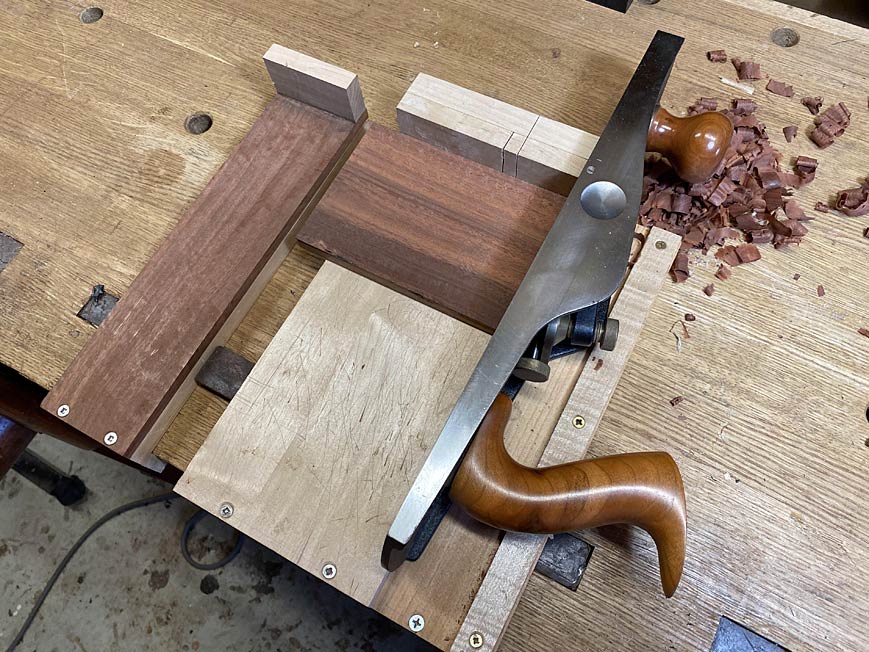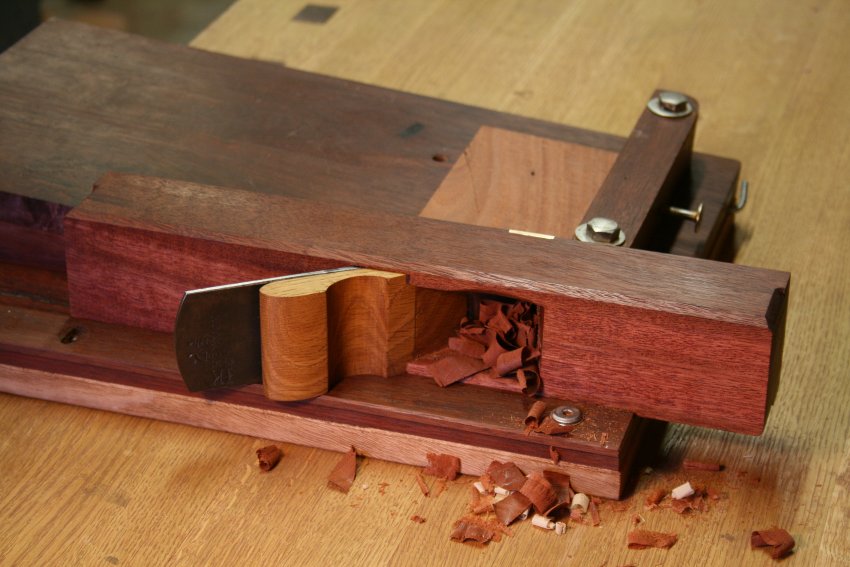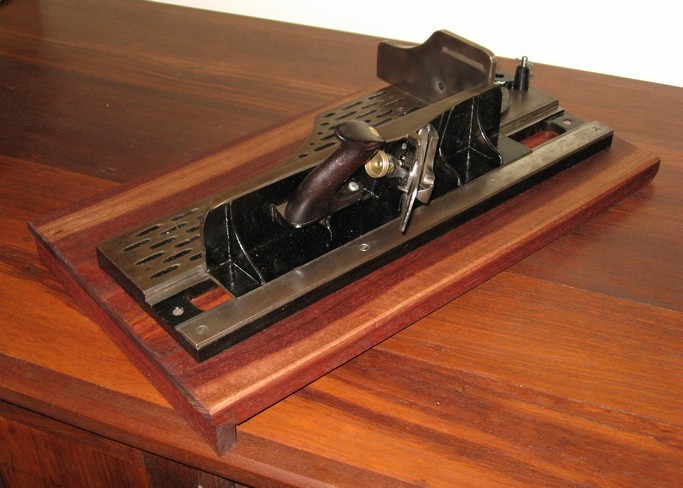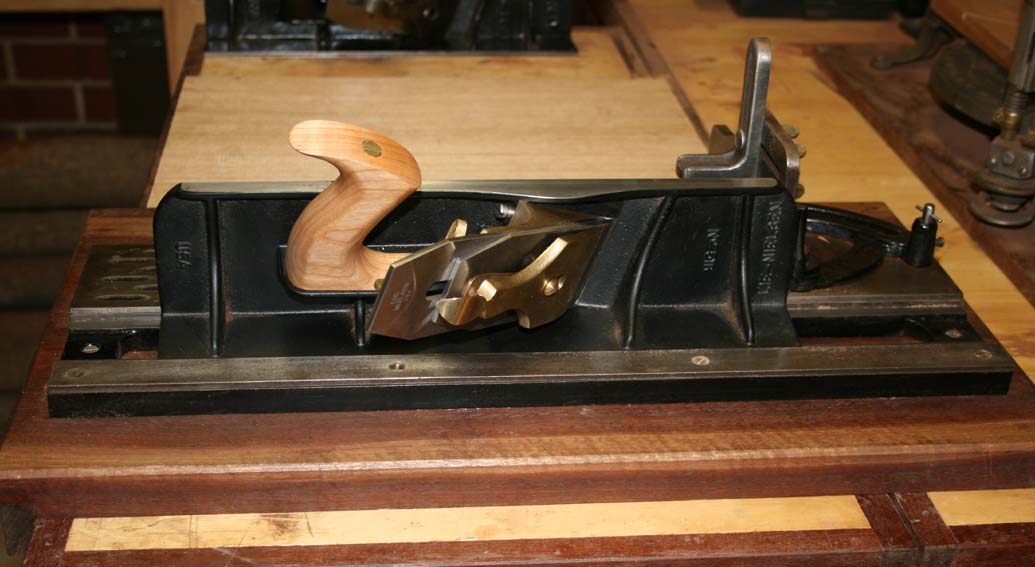Although I still have a few western planes they are packed away in boxes and more often than not I pick up a Japanese plane.
I have never used a shooting board and want to try one. Is it possible to pick a single western plane that works well with a shooting board?
When starting out, and down the shooting board trail, I recommend making a simple shooting board and using an existing plane, something along the lines of a #5 or #5 1/2.
A flat board is just fine.
An article I wrote in 2008:
Setting Up and Using a Shooting Board
There are shooting boards for edges and for ends. Edges are useful for jointing boards, and edges for fitting parts, such as drawer fronts to drawer spaces.
Once you find that shooting end grain is important, you can look for a more specialised plane. A low cutting angle is helpful with end grain, and a LA Jack works a treat here. I used the Veritas for many years with an A2 blade honed at 25 degrees. This will surprise you how well it can work. You many never feel the need to upgrade further.
If you are really taken with this method, then build a better shooting board. My rule of thumb is a ramped board for a plane with a square blade, and you have a wider options when the shooting plane has a skewed blade. A ramped board does not create a skewed cut, but it does permit a skew entry to the wood, which reduces impact. A skew blade creates a slicing action, which is preferred for end grain.
Ramped board with square blade low angle plane (37 degree cutting angle) ...
In 2006 I lucked into a Stanley #51/52 on eBay and paid about $400 for it. It required a total restoration, but turned into the joy of my life (even though the #51 came with a braised frog - the design was notoriously poor in this area) ...
Five years later I was able to upgrade this combination with a LN #51 ...
This plane is very special to me as it was one of the first made by LN, and was signed by Thomas Lie Nielsen (the only one he signed).
Review of the LN #51 here:
http://www.inthewoodshop.com/ToolReviews/LN51ShootingPlane.html
Review of the Veritas Shooting Plane here:
http://www.inthewoodshop.com/ToolReviews/LVShootingPlane.html
The point is that one can take this fixture to higher and higher levels. That does not necessarily make it work any better than the starting point. More enjoyable perhaps .. definitely.
Regards from Perth
Derek











































